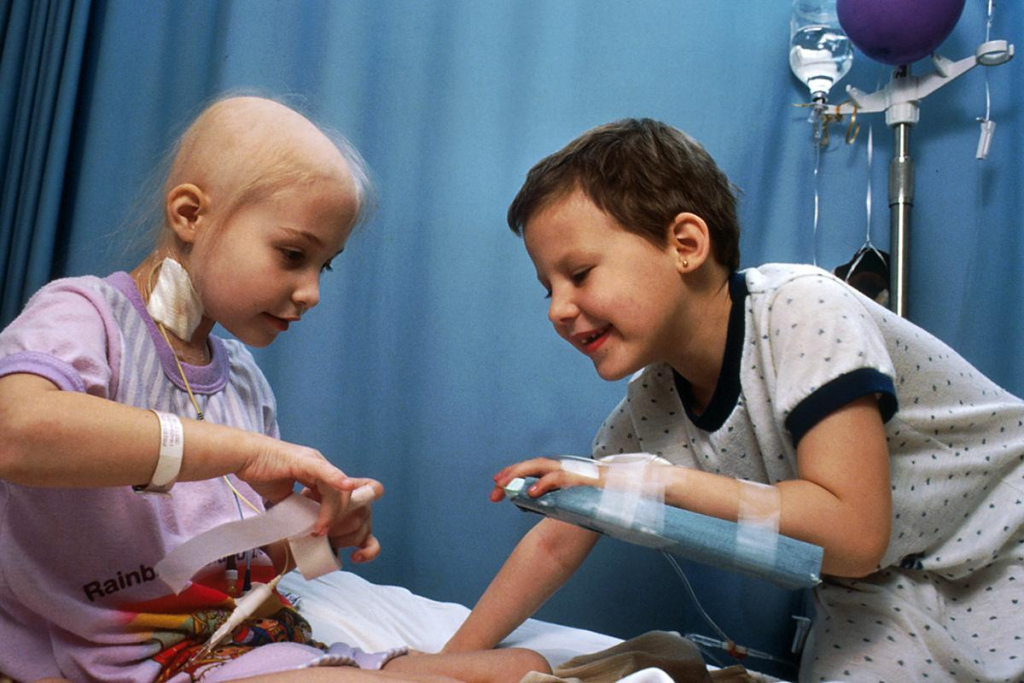Leukemia is a common childhood cancer that starts in the bone marrow. It leads to the production of abnormal blood cells. It makes up about 25% of childhood cancers, which is a big worry for parents and doctors. Many families become concerned when they notice leukemia in teenager symptoms appearing, as adolescents may initially dismiss early warning signs as typical teenage fatigue or stress-related issues.
It’s hard to diagnose leukemia because its early symptoms are often similar to those of more common illnesses. This can cause delays in diagnosis. Quick treatment is key to managing the disease effectively.

We know how important it is to get a correct diagnosis. Doctors face a big challenge in telling leukemia apart from other conditions with similar symptoms.
How Quickly Does Prostate Cancer Spread?Childhood leukemia is a serious cancer that affects the blood and bone marrow. It’s tricky to diagnose because its symptoms are not clear. Knowing how common it is and the challenges in diagnosing it is key.

Leukemia is the top cancer in kids, making up a big part of pediatric cancer cases. About 3,000 kids in the U.S. get leukemia every year. Acute lymphoblastic leukemia (ALL) is the most common type, making up 80% of cases.
Knowing these numbers helps doctors watch for leukemia in kids with vague symptoms.
Leukemia is often misdiagnosed, with about 23% of children getting the wrong diagnosis at first. This is because leukemia symptoms can be similar to those of less serious illnesses. A study found that “The nonspecific nature of leukemia symptoms at presentation can lead to delays in diagnosis.” This shows why doctors need to be extra careful when kids show vague symptoms.
To get a correct diagnosis, it’s important to know the common symptoms and use the right tests. This way, we can avoid misdiagnosis and make sure kids get the right care on time.
It’s important to know the signs of leukemia in teens for early treatment. Leukemia is a blood cancer that shows up differently in teens. Knowing the warning signs is key.
Teenagers with leukemia might have pale skin, dizziness, and shortness of breath. These are signs of anemia. They might also bruise easily or have frequent nosebleeds or bleeding gums.
Swollen lymph nodes in the neck or armpits are another sign. This is because leukemia cells can build up there.

Bone or joint pain is common, too. It happens when leukemia cells gather in bones or joints. This pain can be severe and may cause swelling or redness.
Leukemia in teens can also cause fever, fatigue, and weight loss. These symptoms are not unique to leukemia and can be hard to diagnose. But if these symptoms keep coming back, it’s time to see a doctor.
Frequent infections are another warning sign. Leukemia can weaken the immune system by affecting blood cell production.
It’s vital for teens and their families to know when to go to the doctor right away. Severe symptoms like trouble breathing, severe bleeding, or pain need emergency care. If symptoms get worse or don’t go away, see a doctor.
“Early diagnosis and treatment of leukemia can significantly improve outcomes. If you’re concerned about your symptoms or those of your teenager, don’t hesitate to consult a healthcare professional.”
We suggest that teens and their families watch for these symptoms closely. If they’re worried, they should talk to a doctor. Early treatment can greatly improve how well leukemia is managed.
Many common infections can look like leukemia, making it hard to diagnose. Viral and bacterial infections share symptoms like fever, tiredness, and swollen lymph nodes. This can lead to wrong diagnoses if not checked carefully.
Mononucleosis, caused by Epstein-Barr virus, is often mistaken for leukemia. Symptoms include fever, sore throat, and swollen lymph nodes, just like leukemia. We need to run detailed tests to tell them apart.
Infectious mononucleosis mainly hits teenagers and young adults. It causes tiredness, muscle weakness, and sometimes a big spleen. These signs can look a lot like leukemia, showing we need to be very careful when diagnosing.
Severe viral infections, like those from cytomegalovirus (CMV) or HIV, can also look like leukemia. These infections can cause serious problems and may show blood issues that look like leukemia. It’s important to look at the whole picture of the patient’s health to avoid mistakes.
Symptoms of severe viral infections include fever, losing weight, and swollen lymph nodes. These can be mistaken for leukemia. A detailed medical history and lab tests are key to telling them apart.
Bacterial infections, like sepsis or tuberculosis, can also look like leukemia. They cause fever, night sweats, and weight loss, symptoms seen in leukemia patients. We use a mix of clinical checks and tests to correctly diagnose these conditions.
Bacterial infections can also cause blood issues, like anemia or low platelets. This makes diagnosis even harder. A full diagnostic process is needed to find the real cause of symptoms.
Certain rheumatologic conditions can look like leukemia, making it hard to diagnose. These conditions share symptoms like joint pain and inflammation, making it tough to tell them apart from leukemia.
Juvenile idiopathic arthritis (JIA) is a long-term condition that causes joint pain and swelling in kids. It can be mistaken for leukemia because of the joint pain. But JIA usually has more focused symptoms and goes through ups and downs.
Reactive arthritis happens when the body reacts to an infection, often in the gut or urinary system. It can cause joint pain and swelling, similar to leukemia. But, finding the infection that started it and how the joints are affected helps tell it apart from leukemia.
Systemic lupus erythematosus (SLE) is a chronic autoimmune disease that affects many parts of the body. It can cause symptoms like fatigue, fever, and joint pain, similar to leukemia. SLE is known for specific autoantibodies and a butterfly-shaped rash on the face.
It’s important to understand these rheumatologic conditions to make the right diagnosis and treatment. By knowing the unique signs of each, doctors can tell them apart from leukemia and give the right care.
Many bone and blood disorders can look like leukemia, making it hard to tell them apart. They share symptoms like bone pain, anemia, and bleeding. This can lead to mistakes if not checked carefully.
Osteomyelitis is a bone infection that causes a lot of pain, fever, and swelling. It can be mistaken for leukemia, mainly in kids. Accurate diagnosis needs imaging studies and a bone biopsy to tell it apart from leukemia.
Aplastic anemia happens when the bone marrow can’t make blood cells. It shows symptoms like tiredness, infections, and bleeding, similar to leukemia. Diagnostic tests like bone marrow biopsy are key to tell it apart from leukemia.
Idiopathic thrombocytopenic purpura (ITP) is when you have too few platelets, causing bruises and bleeding. It’s an autoimmune issue but can be confused with leukemia. A detailed diagnostic process is needed to find out why you have low platelets.
Vitamin deficiencies, like a lack of vitamin B12, can cause anemia, tiredness, and other symptoms like leukemia. It’s important to check for nutritional deficiencies when diagnosing.
In summary, many bone and blood disorders can be mistaken for leukemia because of similar symptoms. A detailed diagnostic approach is vital to correctly diagnose these conditions and treat them properly.
Diagnosing leukemia in children requires a team effort. It involves clinical checks, lab tests, and a team of experts. By using different ways to diagnose, we can make sure it’s accurate and avoid mistakes. This approach is key to giving kids the best care when they might have leukemia.
There are key tests to confirm leukemia and rule out other conditions. These include:
These tests are vital for a clear diagnosis and to decide on treatment.
Socioeconomic factors can really affect leukemia diagnosis and treatment. Access to healthcare is a big issue. It can lead to delays in getting medical help. Families with less money or no good health insurance might struggle to get care on time.
Getting a team of doctors is key for a correct diagnosis. This team includes pediatricians, hematologists, oncologists, and more. They work together to:
By combining their skills, doctors can lower the chance of misdiagnosis. This ensures kids get the right care at the right time.
Getting a correct diagnosis is key in pediatric care, even more so when it’s about telling leukemia apart from other similar symptoms. We’ve looked at several conditions that might be confused with leukemia. These include viral and bacterial infections, rheumatologic conditions, and disorders affecting bones and blood.
To improve diagnosis accuracy, we need a detailed and team-based approach. Doctors and healthcare workers must know about the conditions that look like leukemia. They should use a careful diagnostic plan to make sure they get the diagnosis right and treat it effectively.
Understanding how leukemia is sometimes misdiagnosed and why accurate diagnosis matters helps us improve patient care. Working together, healthcare teams can better recognize and treat conditions that might be mistaken for leukemia. This teamwork is vital for giving the best care to children.
Symptoms like fatigue, pale skin, and easy bruising are common. They can also be seen in viral infections, rheumatologic conditions, or other blood disorders.
Leukemia can be hard to diagnose because its symptoms are similar to other conditions. It’s a big concern because leukemia is a common childhood cancer.
Mononucleosis (mono) and severe viral infections can look like leukemia. This is because they share symptoms like fever and swollen lymph nodes.
Yes, conditions like juvenile idiopathic arthritis can be mistaken for leukemia. This is because they share symptoms like joint pain and fever.
Disorders like osteomyelitis and aplastic anemia can have similar symptoms to leukemia. This makes diagnosis tricky.
Blood counts, bone marrow biopsies, and imaging studies are key. They help confirm leukemia and rule out other conditions.
Access to healthcare and the quality of medical facilities matter. They can affect how quickly and accurately leukemia is diagnosed.
A team of pediatricians, hematologists, and oncologists is essential. They work together to accurately diagnose leukemia and avoid misdiagnosis.
Raising awareness among healthcare professionals is key. A thorough diagnostic approach can also help avoid misdiagnosis.
Subscribe to our e-newsletter to stay informed about the latest innovations in the world of health and exclusive offers!
WhatsApp us